If you want the flower beds on your site, no one else left indifferent, put on them crying. Its buds are striking with their beauty and efficiency, while growing culture may even be drought. Our article will tell about landing crinth of garden and care.
Description Krunuma
The bulbous plant of Crynum belongs to the Amarillic family, and its name, with Latin, translated as "hair", he deserved precisely thanks to the similarity of foliage with hanging strands. There are a lot of plant species, about 130, many varieties are so drought-resistant, which are found in the Kapska province of South Africa. You can raise the crying both in the open soil and indoors, because even in dry air it feels great.
Garden crinth flowers are extremely attractive, according to the form of something like lilies, and their large petals in length can reach 15 cm. Located buds in inflorescences at high, up to 1.5 m in the height of the stems. The leaves in the culture are narrow and long, sometimes reach the size of 1 m. The crying also has a pleasant and fairly pronounced sweet smell, in which the notes of caramel are trampled.
Of the more than 100 kinds of crynum there are those that are most suitable for growing in greenhouses and other premises. There are water species that can be breed in aquariums. And there are also those that are best suited for open soil, they can be attributed to Crun Powell.
Krunum Powell occurs in our gardens infrequently, because many consider him too gentle and whimsical. In fact, this culture perfectly feels in our climate, and can be grown as a perennial. In winter it only needs to be covered or digging the bulbs. If the flowers grow in pots, then you can remove them during the cold season.
In the summer in the open air, the household types of crynum grow well, for example, crying Mura. When buying crinth bulbs, you need to comply with some recommendations:
- The bulbs are better to choose large, in diameter about 20 cm.
- The form of them can be rounded or slightly elongated, the bulbs have a long neck and bright flakes.
Of one bulb grow quite a lot of leaves, about 20 pieces. At the variety, crying Powell foliage forms a socket. Young leaves have no flat, and twisted shape.
Culture buds resemble bells. In size, they are large, hanging petals are sharpened at the ends. Color color white, pink or lilac. Flowering falls at the end of summer and the beginning of autumn.
Crynum looks great in single landings, but in group it is simply great. By the way, when growing with groups, crying flowers for a longer time.
Features of planting garden crinam
Children's choice
So that crying well grew, you need to properly pick it up in the garden:
- There should be a lot of sun. The plant drought-resistant, therefore feels perfectly where there is almost no shadow.
- The place should also be spacious, located if possible on the south side of the site.
- The wind and drafts are crying for nothing, it is better to avoid similar sites.
- It is also desirable that the flowerbed is placed on the hill, there is natural drainage and water is not stored in the soil.
As for the decorative moments, it looks great next to coniferous cultures and on the background of living ingredients, they can decorate any floweruba or lawn, put along the walls of the house, around the arbor or terrace.
Growing a garden crying flower in open ground
If you decide to decorate your garden by crying, then here are some useful tips on landing:
- Crinum bulbs are planted in the soil in April or in May.
- The land must be nutritious and breathable, easy. Sand-linous fitness fit well. The plant also needs to provide drainage.
- Preparing the flowerbed under the landing of Krunum, the land is mixed in advance with compost and sand. If the soil is heavy, it is better to make drainage from rubble or bricks.
- The soil is desirable to help the soil before planting. It needs about half a glass for each well.
- Crinum grows in the same place for quite a long time, at least 4 years. The transplants he transfers is not very good, so the flowerub, where you are going to grow it, it is better to eat well right away.
- Attach crying is not very deeply deep, the soil should cover the bulbs of centimeters by 5. Since the plants are large, then the distance between them must be abide by a minimum of 30 cm.
Growing crinth of garden in containers
You can raise crying in the garden not only on the flower beds, but in containers. It is convenient, because in cold winters, flowers can be removed in the room. Planting in pots has its own characteristics:
- It is necessary to deepen the bulbs so that their upper part remains above the ground.
- In pots and containers, crying can be planted in March, but it is desirable to carry out the tanks on the street only with the onset of heat.
- Vases should be spacious, by about 10 cm exceeding the diameter of the bulbs. In absolutely large containers can be planted and several instances.
- In the container it is also important to make quality drainage, and broken shards can be useful.
- The earth's substrate is prepared from garden soil mixed with sand for looseness, as well as with a compost or humus. The most suitable composition of the soil is: on 2 parts of the leaf land take 1 part of the greenhouse soil and 1 part of the sand. Sometimes they take ready-made soil for flowering plants, which is sold in stores.
- Growing crying in pots, as well as on the flowerbed, for 3-4 years. But in containers faster the nutrients from the soil disappear, so it is better to plug a compost one annually on top.
Carnum care
Culture care features include the following:
- Crynum needs regular irrigation during growth and boutons. But it is not necessary to abundantly to irrigate it, it is advisable to simply maintain a small moisture. The dampness is an enemy for the plant, his bulbs are discharged, deteriorate and die.
- Culture loves feeding. It fertilizes every 2 weeks with liquid compositions. Mineral dressings alternate with organic. Mineral substances are diluted with water in a volume of 5 g per 10 liters of fluid. The organic is also dissolved in water, it takes a manure, litter or ready-made compounds from the store as such fertilizers. Before the start of flowering, the crying is fed by superphosphate and potash salt.
- When foliage on crinams yellowed and dismissed or falls at all, it means that the plant has passed during peace and must be prepared for wintering. If the flowers grow in open soil, they are hiding on the winter under the straw or peat layer. The layer should be thick, up to 50 cm. In the spring, such protection is preferably removed in time. In latitudes with cold climates and harsh winter, plant bulbs should be digging and putting on a refrigerator. You can go a little differently: to transplant lows into containers and put it in a cool room, without watering them during the winter.
- If the crynums are grown in pots, they are also sent for winter to a warmer place, where the air temperature does not fall below 5 ° C. Sometimes, when there is a risk of freezing the room, the pots are protected from cold straw or any observer material with thermal insulation properties.
- In winter, the crynum is not accepted. If there is a threat that the earthen com will dry, you can make it a little moisturize, but more often it is better not to do this for a season.
- It is important that the room for wintering was not even warm. Temperature There should not rise above 15 ° C. If this condition does not observe, the crynum will not bloom the next year. In general, the most suitable is the temperature of 10 ° C.
How to breed and transplant crying
Crinum's transplant is carried out in April or in May, at the beginning of the growing season. If the flower grows in a pot, then this can be done in March. In the process of transplanting a bush can be at the same time and spread, dividing the increasing rhizomes or disembarking "children".
"Children" transplanted for starters in small containers, and in the end of the spring transferred to a permanent place of growth. Young sprouts are feeding with mineral complexes. Somewhere for 3-4 years they will already bloom. This method of reproduction is considered the most simple and effective, because the seeds are almost never bred by crying.
Crynum Garden, photo:

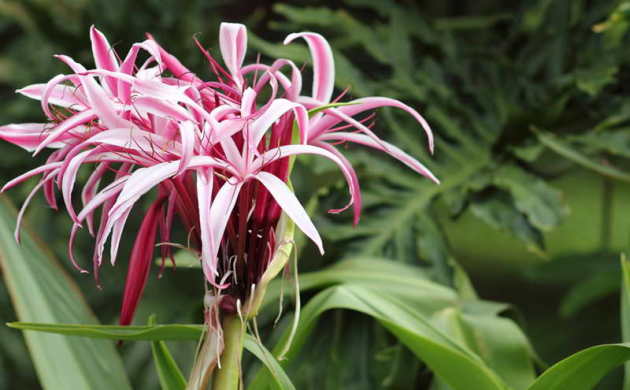
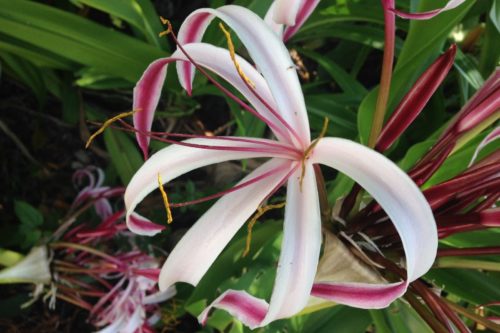
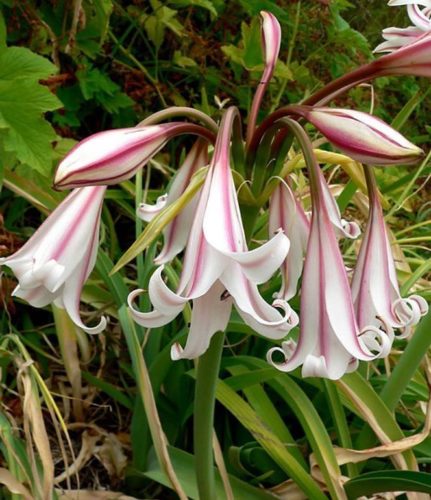
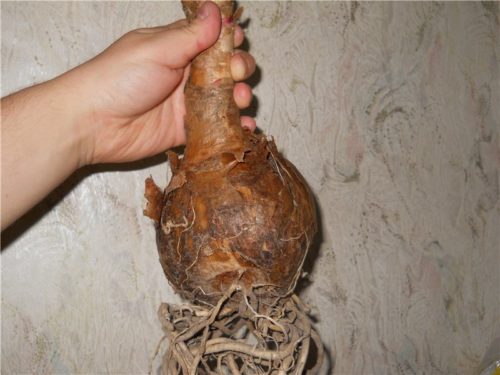
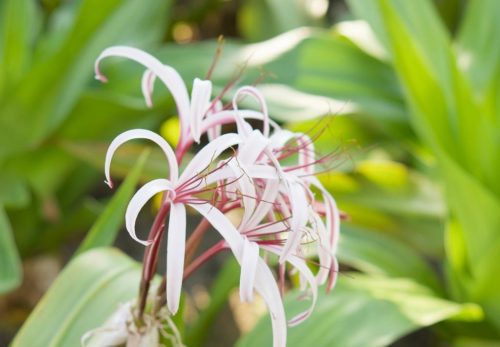

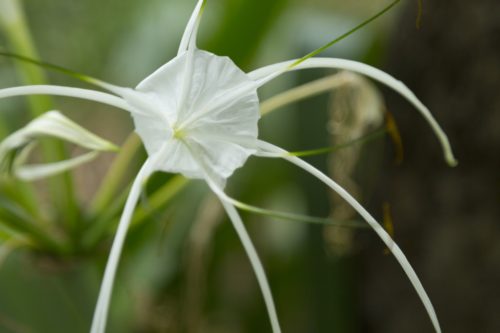
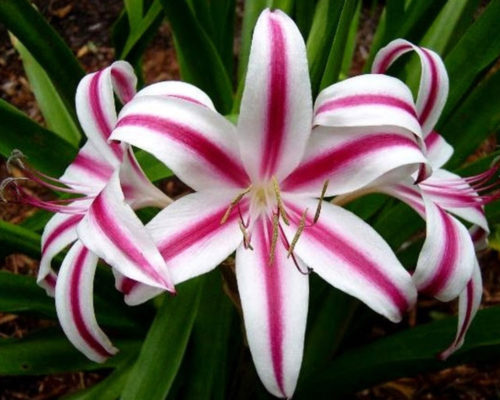
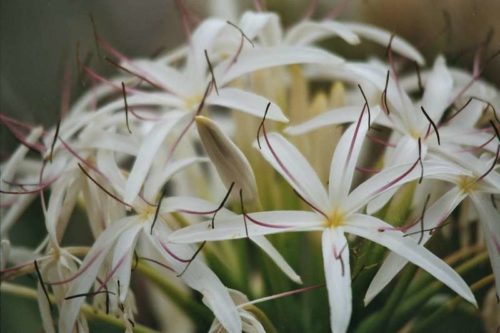
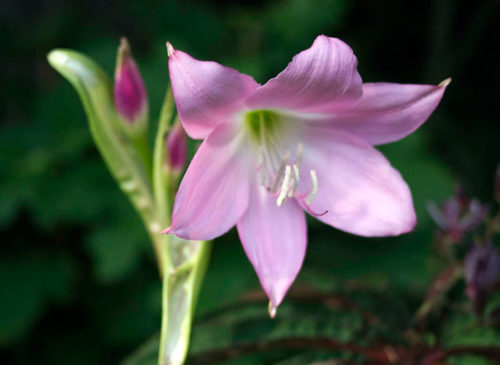













 Start a discussion ...
Start a discussion ...